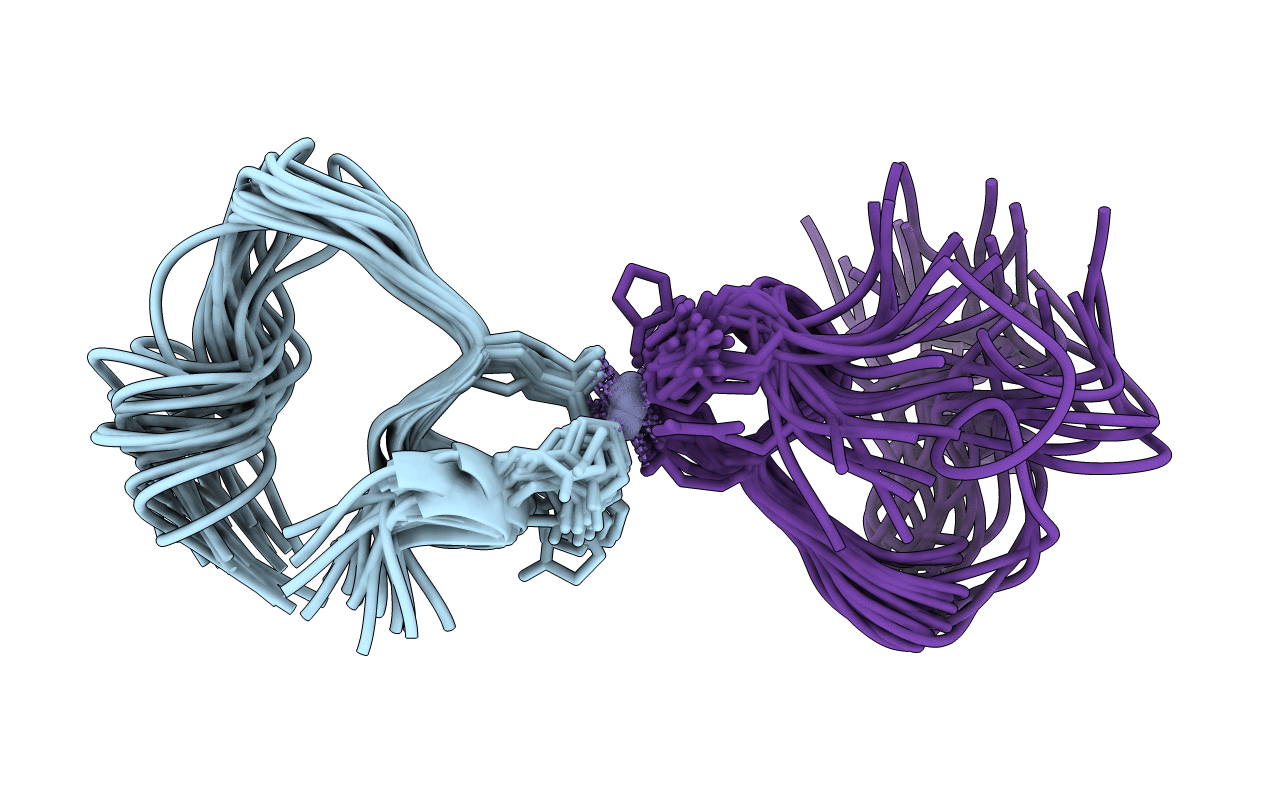
Deposition Date
2013-11-06
Release Date
2014-11-12
Last Version Date
2024-10-30
Entry Detail
PDB ID:
2MGT
Keywords:
Title:
Zinc induced dimer of the metal binding domain 1-16 of human amyloid beta-peptide with Alzheimer's disease pathogenic English mutation H6R
Biological Source:
Source Organism:
Homo sapiens (Taxon ID: 9606)
Method Details:
Experimental Method:
Conformers Calculated:
100
Conformers Submitted:
20
Selection Criteria:
structures with the lowest energy


